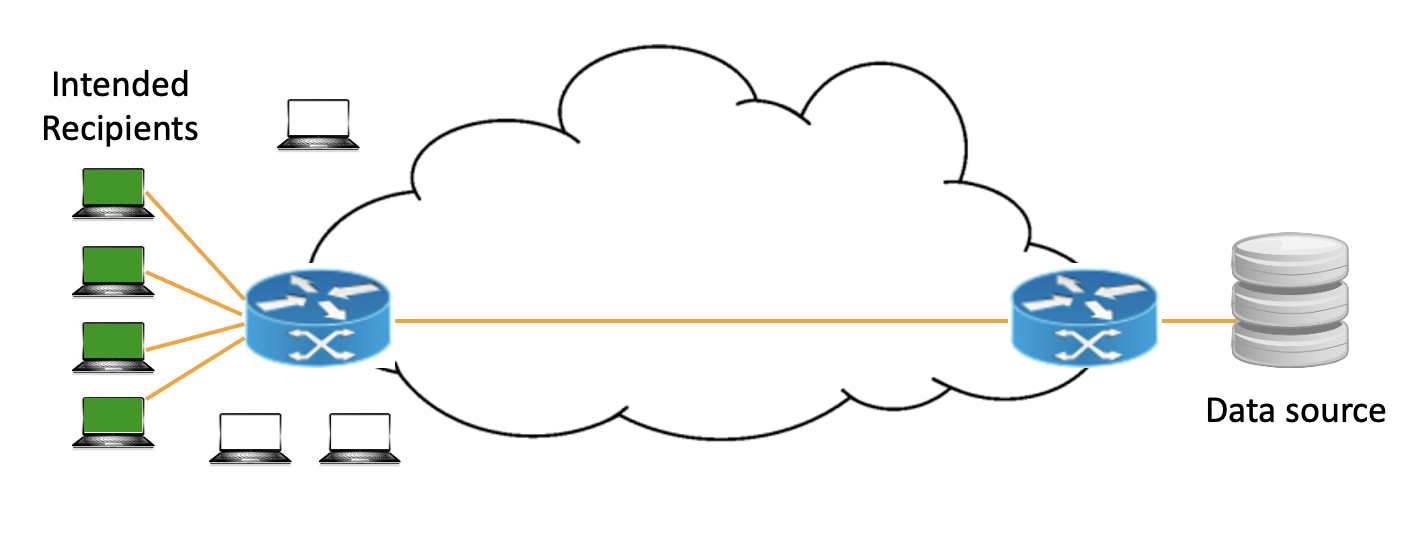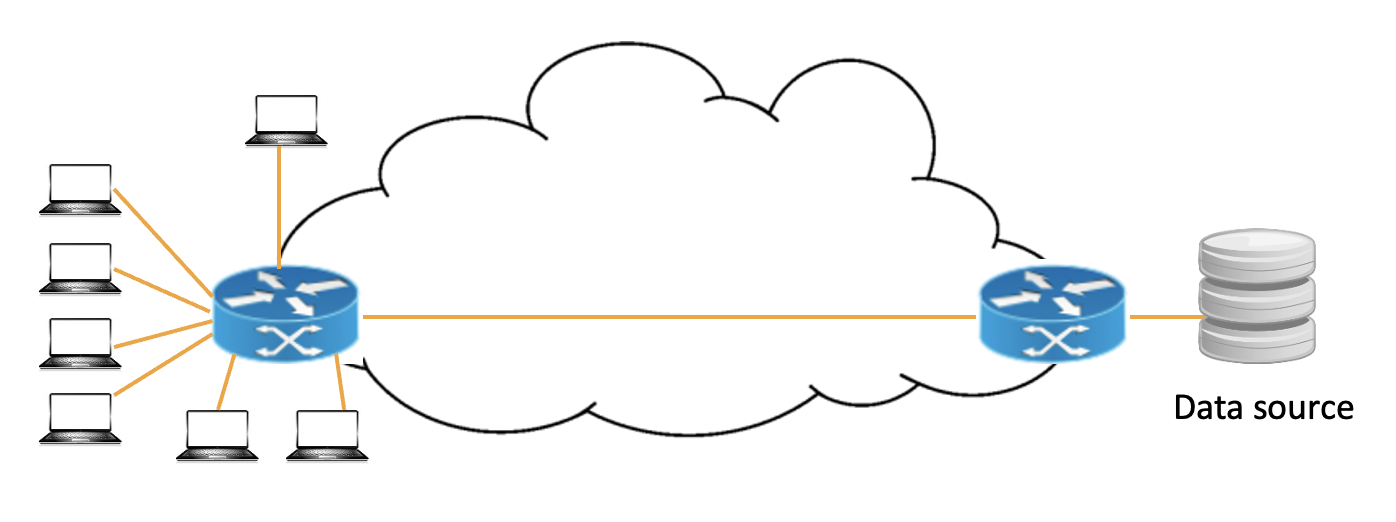4.1. Multicast Background
Multicasting data optimizes how is sent through a network. Often data is sent from one point to another (Unicast)

If numerous end-users want to receive information from the same source at the same time, the bandwidth required to send the information through the network can be reduced.
This is achieved by IP Multicast. Information is sent as one stream as far as possible before splitting it to the intended recipients.

Broadcast is a third option for routing data through the network; in this case the information is sent to all users in a broadcast domain.

With multicast, the recipients of the information can be limited to only those that are actually interested in receiving the information.
Multicast is typically used for streaming application like:
Scheduled (not on-demand) IP Television
Video advertising
Multi-point video conferencing
Stock-quote applications
Simultaneous distribution of large files to a number of computers
IP multicast enables real time communication between a source and a group of recipients (destinations) through an IP network.
Recipient can dynamically enter an IP multicast group by sending a Join message, and drop out of the group again by sending a Leave message
Multicast address range (IPv4): 224.0.0.0 to 239.255.255.255

The Join/Leave process is handled by:
Internet Group Management Protocol (IGMP) for IPv4
Multicast Listener Discovery (MLD) protocol for IPv6
To send data packets to an IP multicast group, the source use the multicast group address as destination IP address in data packets
Multicast group addresses are allocated dynamically.
There is no need for sources to register anywhere to send data packets to an IP multicast group, and sources don’t have to join the group through IGMP/MLD
Several sources can send data into an IP multicast group.
IP multicast actually supports both point to multi-point and multi-point to multi-point communication.
IP multicast does not require that the multicast group source knows the recipients in the group
IP network elements (e.g. switches, routers) transport data packets from the source to the IP multicast group recipients. IP network elements replicate data packets when required, but will use the IP network efficiently as a data packet is only sent once over a given link in the network, even if it will end up at numerous recipients